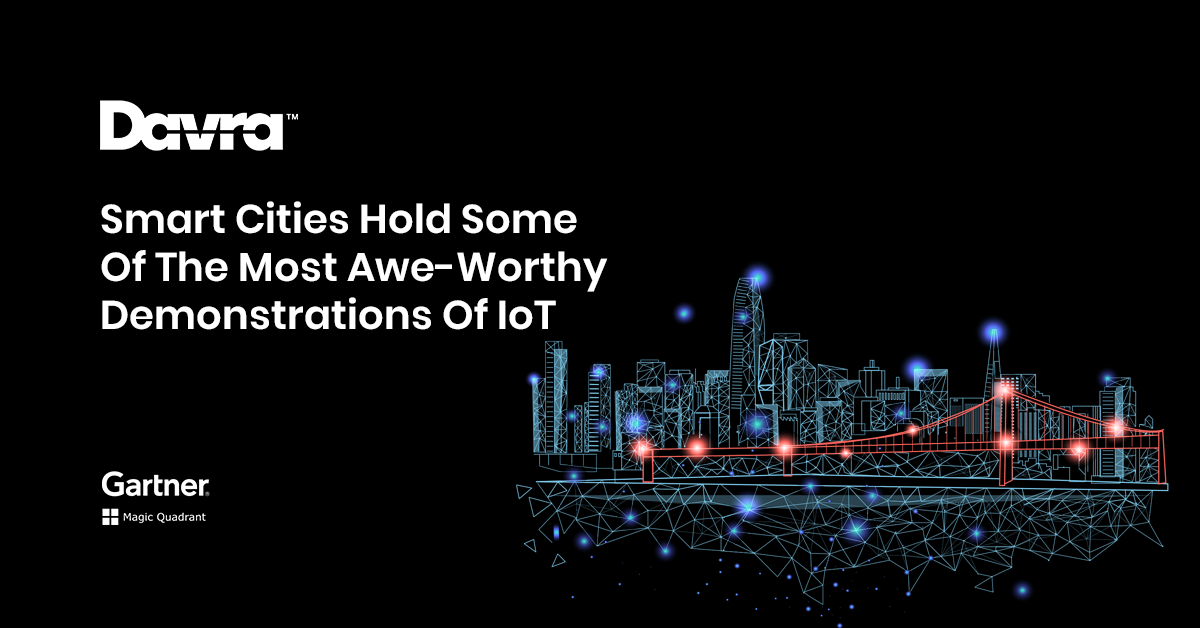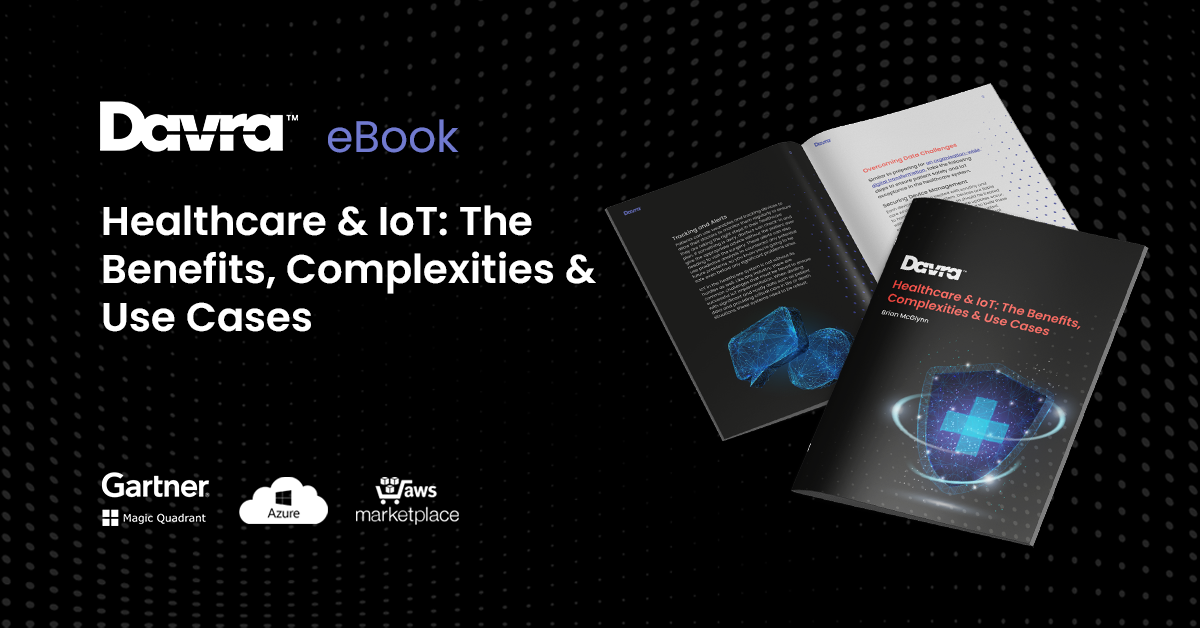The idea that the Internet of Things, or IoT, heralds a new era for people and technology is far beyond theory. The transformations are already emerging all around us, but those who look only to the corporate world may miss some of the most inspiring examples. Smart cities hold some of the planet’s most awe-worthy demonstrations of the IoT’s potential.
What should would-be insiders stay focused on? Fear not of missing out, because Davra has researched and implemented the domains with the most impact.
As far as world-shaking innovations are concerned, modern urban spaces are hotbeds of new ideas. The same holds true in connected tech, yet a handful of applications stand out as continual trend-setters.
1. Smart Lighting
Keeping the streets bright is more than just a good means of attracting well-heeled professionals and tax-paying small businesses to a growing city. Smart lighting contributes to improved quality of life in ways that are easy to see and appreciate.
Daylight Harvesting
Connected lighting helps daylight-harvesting systems do better at their job of reducing the need for electrical power. By automating processes like setting brightness levels and tracking daily use, these implementations improve a cities’ ability to stay green economically.
Load Management
Although lighting is an inevitable municipal outlay, it’s not the constant fact of life that many outside observers picture. Even when they appear to shine consistently, street lights present power grid operators with dynamic, evolving requirements.
Linked lighting systems are ideal for managing these complex, demanding loads. Just as smart buildings measure occupancy to decide when to turn on room lights, facilities like municipal vehicle lots can count cars to understand their peak hours and make the best use of site power during outages.
Ambiance and Utility Improvements
Smart lighting is redefining people’s relationships with the cities they inhabit. Municipalities that want to differentiate themselves from their neighbors use intelligent lighting to provide situationally appropriate street-level illumination. This is a great way to cultivate a far more welcoming appearance while simultaneously minimizing waste.
With the aid of uniform, centralized control dashboards, urban managers can automatically accomplish tasks once regarded impractical at best. For instance, programmable lights might help guide late-night foot traffic after a big concert or maintain improved visibility around trendy bars following spikes in street crime. Places like Atlanta have experimented with using LED lights to monitor gunshots and alleviate congestion. The modular nature of IoT-linked hardware enables new, exciting control schemes with the potential to help urban living feel safer and ultimately more appealing in a smart city.
2. Smart Waste
Some aspects of urban management aren’t quite as glamorous as others, but the Internet of Things devices make these tough jobs less time-consuming and error-prone. In Chicago, for instance, leaders linked data from sensor-equipped dumpsters to predictive analytics tools. By learning to anticipate when trash receptacles will overflow and applying the knowledge to rethink its pest control tactics, the city has become 20 percent more effective at managing rat populations. Other solutions by our friends in IBM monitor individual events, such as when a garbage truck lifts a rubbish bin or visits a new neighborhood. Smart city IoT platforms use such data to refine collection practices, cut back on vehicle emissions and improve service quality.
As a fleet-driven industry, waste management exemplifies how even minor tech changes can revolutionize a given field when applied at scale. For example, picture a small town administrator whose office routinely finds itself swamped with complaints from residents and business owners whose bins are overflowing. Upgrading to receptacles that use weight sensors to signal when they need emptying could be a cost-conscious way to appease the locals.
3. City Transportation
Getting around in the big city can be quite the ordeal. Does the Internet of Things hold the promise of change for road-weary commuters?
Accident Awareness and Safety
Transit benefits immensely when those at the helm stay informed throughout the journey. Sadly, traditional disconnects and transportation frameworks haven’t always made it easy. In smart cities, however, cars that get into wrecks can share their statuses and locations with authorities instantly via public networks. In addition to keeping officials in the know, these notifications might inform other smart vehicles that they should slow down.
Some smart transit tech takes accident prevention even further. Embedded sensors that monitor site-specific conditions, such as frozen bridge surfaces, are already being used to help reroute traffic and dispatch fleets of plows and salt trucks. Since lives hang in the balance when road maintenance lags, such improvements are easy to justify even in the face of tight budgets.
4. Smart Parking
What will the smart parking structure of the future look like? While most outward changes will likely escape all but the closest scrutiny, the nervous systems of modern lots and garages are taking huge strides upward and onward.
Some lots interact with smart vehicles to gather data on how many open spaces they have available. Others use vehicle feedback to tell precisely where the openings are and nudge waiting cars towards the path of least resistance. Street parking hardware can perform similar feats by subtly shepherding motorists away from overcrowding and even mitigating congestion by favoring certain parking zones at specific times.
5. Environmental Monitoring
In many locales, the environment takes a back seat to other concerns. Whether they’re plagued by economic constraints or a fundamental lack of foresight, towns and cities often struggle to deal with problems whose origins recede generations into the past.
The IoT helps paint these urgent issues in a clearer focus. For example, air-quality monitors not only alert people to dangerous conditions but also promote public accountability by revealing where the worst discharges are coming from. The same goes for inexpensive water turbidity monitors that can help stewards safeguard vital watersheds. With the right sensors in place, regulators gain more power to levy fines accurately and take effective cleanup actions.
Environmental oversight also holds lots of promise for indirectly reducing the footprint of essential municipal activities. Cities and departments can tag computers and other devices to heighten traceability and e-waste stream diversion. Tracking a fleet’s movements to improve dispatching and fuel consumption can mitigate emissions. In towns with smaller coffers, sensor-laden service vehicles might make ideal mobile monitoring platforms (as we have seen!).
Why the Internet of Things Thrives in Cities
The steady-paced urban adoption of connected tech makes practical sense: Densely populated areas stand to gain the most from improving their surroundings, and many already come equipped with the fundamental IT infrastructures.
According to Gartner, the 10 billion devices on the Internet of Things will swell by more than 30 percent in 2019, but organizations without IoT architects may prove incapable of harnessing the potential. Clearly, the hardware is ready and willing. The real question is whether the stakeholders can keep up.
Having a proven Internet of Things leader onboard goes a long way. Find out how the right IoT Platform can make a smart city even smarter by demoing Davra.


